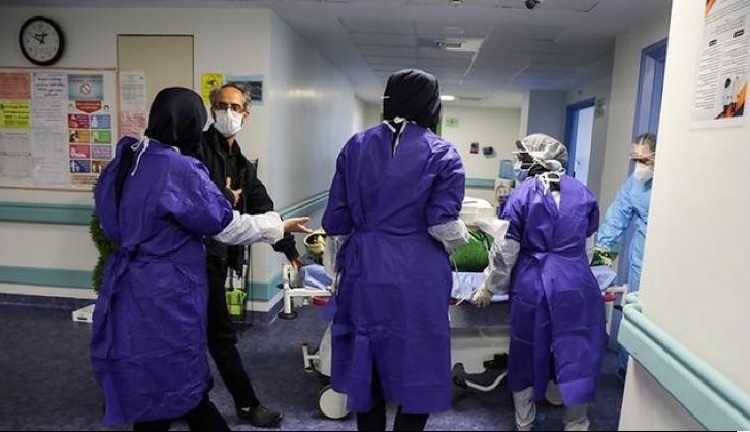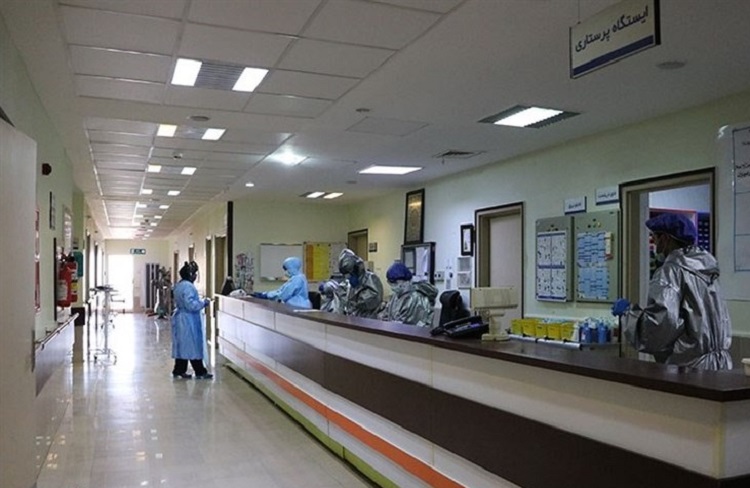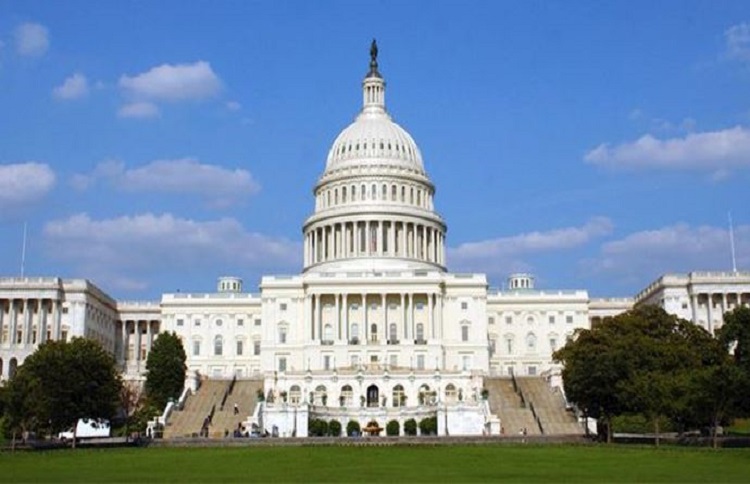LATEST ARTICLES
Dire Living Conditions of Iranian workers on International Labor Day
On the occasion of International Workers’ Day, May 1, the dire economic conditions of Iranian workers have reached a critical point.
Issues such as wages below the poverty line, delayed paychecks, lack of job security, increasing inflation, and decreasing purchasing power have put immense pressure on millions of workers and their families in Iran.
Several labor activists and unions have emphasized the need for “unity, organization, and mobilization” among workers and wage earners to change the current situation in Iran, criticizing the government’s “anti-labor policies.”
The Syndicate of Workers of Tehran and Suburbs Bus Company, in its statement, highlighted that this year’s International Workers’ Day is being commemorated under circumstances where hundreds of workers, teachers, labor rights defenders, and toilers are facing unfair sentences and imprisonment. They added that suppression, harassment, and persecution of toilers, women, and youth in Iran have intensified.
The union addressed various issues faced by Iranian workers, including lack of job security, temporary work contracts, expansion of subcontracting companies, unpaid wages, non-implementation of job classifications, failure to harmonize the rights and benefits of retirees, and wages below the poverty line.
They also criticized the “astronomical housing costs, rampant inflation, and exorbitant prices” which have imposed unbearable conditions on a significant portion of the working class.
The Syndicate of Workers of Tehran and Suburbs Bus Company emphasized that “putting pressure on pioneering workers, threatening and intimidating them, dismissal, detention, imprisonment, and unjust verdicts have become the norm.” They stated that even for organizing independent events on International Workers’ Day, workers are not spared.
The Syndicate wrote: “Union members have been arrested and beaten many times in the past on International Labor Day” and “in recent years, they have been repeatedly summoned and threatened to stop union activities.”
Moreover, the Free Union of Iranian Workers, in its statement on International Workers’ Day, referred to nearly two years since the “revolutionary uprising of Iranian people and its brutal suppression” and highlighted the resilience of women and oppressed masses in reshaping the political landscape of the country.
According to the Free Union of Iranian Workers, in these circumstances, Iran regime seeks to maintain its precarious position through regional military adventurism and domestic intimidation by issuing and implementing inhumane execution sentences and aggressively targeting women and girls opposing compulsory hijab.
The statement emphasized that “only a popular social-political revolution and the formation of a secular and democratic government based on freedom and equality, rejecting exploitation, can put an end to the inhumane conditions existing in the country and the warmongering and atrocities in the Middle East.”
On April 29, the semiofficial ILNA news agency quoted Ali Ziaei, the head of the Crime Scene Investigation Group of the Forensic medicine Organization of the country, that in 2023, 2,115 people lost their lives in work-related accidents, indicating an 11.3% increase compared to the previous year.
According to a number of labor activists, this official statistic does not include workers not covered by the labor law or those working in the so-called “under-stairs (very small businesses)” workshops.
Additionally, the Coordinating Council of Nurses‘ Protesters stated, “As nurses whose lives are drained in hellish work environments in hospitals and who suffer from exhaustion with meager wages, on International Workers’ Day, we declare we will no longer submit to servitude.”
“Reforming tariffing and registering nursing services under the name of nurses, eliminating compulsory overtime, and correcting overtime compensation” are among the demands raised by this council.
Only One-Fifth of Iran’s Annual Housing Needs Are Met
Beytollah Setarian, a housing expert, said in an interview that Iran needs one million housing units annually, but only 200,000 houses are built. He added that only a “privileged and powerful class derived from a rent-seeking and corrupt economy” can afford to buy a house given the current conditions in the country.
Setarian, in an interview with the regimes Entekhab news website on April 29, referred to severe inflation in Iran and said that housing in the country has become a “luxury commodity” and “unattainable.”
The Central Bank announced an annual inflation rate of 52.3% for 2023, the highest annual inflation rate in 80 years.
Setarian attributed the problems in the housing sector to the inefficiency of macroeconomic policies in the country and said, “A closed and semi-Marxist government economy fosters an extremely capitalist rent-seeking economy within itself,” leading most of the society towards poverty.
On April 22, the state-run Etemad newspaper, by examining information on poverty rate data, wrote that a 10% growth in the poverty rate in two years means that about 8 million people have been added to the number of poor in the country.
Setarian criticized the government’s housing policies and added that the government’s slogan of housing construction discourages construction companies from entering this field and leads them to withdraw their capital from the market.
This expert emphasized that since the government announced the slogan of national housing, housing production has significantly decreased.
During his election campaign, Ebrahim Raisi promised to build one million housing units annually.
After intensifying criticisms of the government’s inability to fulfill this promise, Mohammad Mokhber, Raisi’s vice president, said in December 2022, “There is a difference between building housing and letting people build. The government should build a part; we can give land to the people so they can build themselves.”
Setarian further predicted in his interview with the Entekhab news website that housing prices would continue to rise this year.
He added, “2024 is like 50 years ago, a year of housing inflation… When housing prices increase, all associated parameters, including rent, will also increase. We might have much more than 40% inflation in prices and rent. The government just makes slogans.”
Official reports indicate a historic rise in house rent in 2023, with a 52% growth in the capital over one year.
A look at house rent amounts and messages from Iranian International’s audience shows that contrary to the claims of Iranian regime officials, rents have increased by an average of 130% in Tehran and other cities.
The examination of citizens’ messages on social media indicates that house rent has become one of the most important economic concerns for Iranians.
Resignation, Job Change, and Nurse Exodus in Iran
The state-run Hame-Mihan newspaper has addressed the problems of the healthcare workforce in Iran, examining issues such as resignations, job changes, and nurses leaving their positions. It indicates that in recent months, aside from suicides, a group of nurses in various hospitals across the country have collectively resigned.
On April 29, Hame-Mihan, had interviews with protesting nurses and reported that groups of nurses from Shohadaye Tajrish Hospital, Taleghani Hospital in Chalus, Taleghani Hospital in Abadan, and nurses from several healthcare centers in Yazd have made headlines with their mass resignations in recent months.
In recent years, nurses have been grappling with numerous issues, laying the groundwork for ongoing protests. Hame-Mihan notes that “collective resignations” have been added to the range of protest actions by nurses.
In the latest development, a group of 43 nurses from the operating room and anesthesia department of Shohadaye Tajrish Hospital resigned.
In their protest resignation letters, these nurses stated that “failure to address repeated follow-ups regarding demands such as low overtime rates, wages and performance reward, non-payment of approved tariff, radiation fee, clothing right, and approved housing right by the Ministry of Labor” are part of the reasons for their resignation.
Ham-Mihan reports that among the factors contributing to nurses’ protests and the prevalence of mass resignations are heavy work shifts, manpower shortages, lack of respect in the workplace, performing unrelated tasks beyond the scope of their duties such as pharmacy-related tasks, secretary duties, and caregiver duties.
The Deputy Nursing Department of the Ministry of Health has confirmed reports of nurses quitting their jobs.
Ham-Mihan reports that in addition to physicians’ inclination towards working in the beauty sector, nurses also prefer to leave hospital jobs and engage in other professions such as working in beauty clinics and hair transplantation.
According to the newspaper, quitting is not only among “young nurses” in healthcare centers but has also extended to “more experienced personnel” who prefer to resign despite their extensive work experience.
The collapse of the healthcare system is occurring while health ministry officials have so far shown no reaction to the increasing cases of nurses’ resignations.
Mohammad Sharifi Moghadam, the secretary-general of the “Nurse House,” told Ham-Mihan that when you talk to any hospital in the current situation, they tell you that some nurses have left or a group is preparing to migrate.
Sharifi Moghadam has announced the “15% quitting rate of nurses” and considered it “alarming.”
Regarding the cases of quitting, he said, “Quitting has always existed, but in the past three to four years, it has accelerated. Recent symbolic and protest resignations are new and are for demonstrating nurses’ collective protests. A nurse says, now that I want to leave, others should be aware too.”
Alongside resignations, the issue of migration among nurses is also hotly debated and has gained momentum in recent months. In this regard, on March 4, with the crisis of migration intensifying, the head of the National Nursing Organization announced the minimum migration rate of nurses per year to be 2,700 and said that the “Nurse Retention Package” is being developed.
Mohammad Taghi Jahanpour had claimed that this action was ordered by the regime’s supreme leader, Ali Khamenei.
Some analysts see these events as indicative of the depth of the disaster and the looming major crisis in this sector; a crisis that, from their perspective, even the regime’s supreme leader is apprehensive about its social and political consequences.
This crisis manifests itself at a time when, according to Mohammad Mirzabeigi, the head of the Nursing Organization on December 25, 2023, more than 10,000 of Iran’s “finest nurses” have “quit their jobs and migrated” from the country.
Nurses and healthcare workers in Iran have repeatedly protested their job conditions and problems in various cities of Iran over the past years and months.
International Monetary Fund: Iran Needs “$121 Oil” to Avoid Budget Deficit
The International Monetary Fund (IMF) states in its latest quarterly report that the Iranian government needs the price of each barrel of oil in the global markets to be more than $121 to avoid a budget deficit in 2024.
This comes at a time when the price of Brent crude oil, which is even more expensive than Iranian oil, is trading at less than $90, and this international institution has predicted that the average price of Brent oil this year will be below $79.
The report also does not consider Iran’s discounts to Chinese refineries, but Reuters had previously reported that Iran offers about $13 discount per barrel of oil to Chinese customers.
The IMF report, released on April 28 under the title “Regional Economic Outlook for the Middle East and Central Asia,” further states that last year, Iran’s daily oil production increased by half a million barrels due to increased exports, reaching 3.1 million barrels, but such continuous growth is not expected, and only 100,000 barrels will be added to Iran’s daily oil production this year.
The IMF also predicts that the government’s debt and debts of government subsidiaries will increase by more than $4 billion compared to last year, reaching $118 billion, which is equivalent to more than one-fourth of Iran’s economy.
The IMF’s criterion for calculating Iran’s economic indicators is the official Nima exchange rate of the dollar (Nima dollar is distributed in Iran’s Integrated Forex System to provide the necessary currency for imports and exports) and some of its data is taken from the Iranian government itself. Currently, Nima dollar rate is about 410,000 rials, while the market rate for each US dollar in the free market is about 620,000 rials.
Earlier, the Central Bank of Iran also reported that the government’s and state-owned companies’ debt to the country’s banking system increased by about 56 percent in 2023, reaching a peak of 13,100 trillion rials (approximately $21.797 billion).
The government’s debt to banks is only a small part of its total debts. The largest share of government debt is related to borrowing from the National Development Fund, which, according to the institution’s report, the government owes more than $100 billion to, and has stated that the government “cannot settle its debts.”
Due to severe budget deficits in recent years, the Central Bank has been forced to print banknotes without backing to be able to borrow from banks and other financial institutions in the country.
This has led to a significant increase in liquidity in the country; so much so that, according to the IMF’s assessment, liquidity in Iran has surged by nearly 35 percent over the past year and will increase by 33 percent this year.
Such a significant surge in liquidity has led to a depreciation of the rial and rampant inflation.
The IMF assessment indicates that inflation in Iran was 41.5 percent in the past year and will be 37.5 percent this year.
However, this estimate reflects data provided by the Iranian Statistical Center to this international institution, but the Central Bank of Iran recently stated in a subsidiary report related to the calculation of debt settlement and dower that last year’s inflation rate was above 52 percent.
Alarming Rise in Suicide Rate Among Iranian Physicians
Mohammad Mirkhani, a social consultant of the Medical Council Organization, considered the difficult working conditions of physicians in Iran as one of the reasons for the significant increase in the suicide rate among this group.
Mirkhani said, “At one time, the medical field was very popular and had a good financial position, but unfortunately, financial problems have increased in recent decades. Physicians usually become more sensitive in family and emotional matters due to work conditions and frequent awakenings severely affect the individual.”
He described the working environment of physicians in hospitals as “barracks” and added that these conditions are especially harder for medical interns.
According to Mirkhani, medical residents “sometimes cannot sleep for 72 hours, and these conditions are extremely dangerous. Usually, these conditions make them depressed.”
He referred to the decline in the status of physicians in society and harsh treatment by patients and their companions towards physicians, saying that the security of this group has decreased in the work environment.
In recent days, following the news of the suicide of Samira Al-e-Saeedi, a rheumatology lecturer and member of the Rheumatology Research Center at Tehran University of Medical Sciences, the danger signal about the lack of mental security among members of the medical staff sounded again.
In response to the self-inflicted death of Al-e-Saeedi, physician Mohammad Abdous wrote on the X social network: “Physicians are more exposed to work-related tensions and stresses than other segments of society.”
Abdous added that Al-e-Saeedi had intended to discuss this matter with her colleagues the day before her suicide, but they did not take the issue seriously.
In January, Nima Shahriarpoor, an emergency medicine specialist, announced that, according to conducted research, the suicide rate among members of the medical community has increased 3.1-5 times.
He added, for example, from among 14,000 medical residents in the country, an average of 13 people commit suicide annually.
In mid-March, the suicide of Parastoo Bakhshi, a specialist heart surgeon, led to many reactions. She, who was only 35 years old at the time of her death, ended her life by taking medication.
Hadi Yazdani, a media activist in the medical field, on March 31, called the events leading to the suicide of this physician an example of “systematic injustice and humiliation” of members of the medical staff at the Ministry of Health.
Iran Begins Spring with Shock in Food Prices
Figures in the most recent report by the Iranian regime’s Statistical Center on Inflation in March 2024 show that inflation in the food sector experienced a shock in the first month of the year.
According to a April 25 report by the regime’s Donyay-e-Eghtesad newspaper, “onions, oranges, lemons, bell peppers and pomegranates” with the highest inflation rates in a month “saw more than 10 percent increase in prices,” based on the statistical center’s report.
The newspaper also noted that infant formula and red meat were important commodities that had been hit by “more than 60 percent price growth” in a single year.
According to Iran’s Statistical Center, “in the point to point inflation sector, canned tuna with a price increase of 109 percent became the only commodity that has experienced more than 100 percent price increases over the past year.”
Another notable point in the statistics provided by the Statistical Center on food point to point inflation in March 2024 is that it is the lowest in two years.
However, the state-run Etemad newspaper on April 24, stating that Iran’s annual inflation rate reached 38.8 percent, quoted by Morteza Afghah, economist and professor at Ahvaz Chamran University, wrote: “Although the decline in liquidity has caused a drop in inflation, it has also brought a recession, which has led to the closure of some small and medium-sized factories and enterprises that have suffered due to reduced liquidity.”
Inflation in Iran above 30 percent since 2018, and according to the International Monetary Fund forecast, inflation in Iran will be 37.5 percent this year.
Iran is one of the few countries in the world with hyperinflation over the past few years.
The International Monetary Fund warned in late February that even if Iran was dragged “narrowly” into the Israeli-Hamas war, the country’s economy would not only grow less this year but shrink by 5 percent.
The international body warned that Lebanon would shrink by 20 percent this year if Lebanon was dragged into the war due to attacks by Iran-backed group Hezbollah, and that the Yemeni and Iraqi economies would worsen.
US Slaps New Sanctions on Iran’s Drone Program
On Thursday, April 25, the United States imposed new sanctions on the regimes of Iran and Russia.
According to a statement from the Office of Foreign Assets Control of the US Treasury Department, these new sanctions affect Pouya Air company, eight individuals, five ships, and 15 entities.
The US Treasury Department stated that these individuals, entities, and ships have played a central role in facilitating and financing the clandestine sale of drones to the Ministry of Defense and support for the armed forces of the Iranian regime, which itself supports the Revolutionary Guard Corps (IRGC) and Russia’s war in Ukraine.
According to this statement, the company Sahara Thunder is the primary entity overseeing the promotion of Iran’s Ministry of Defense and support for these efforts.
This company has also played a major role in the design, development, manufacture, and sale of thousands of drones, many of which were ultimately transferred to Iran for use in Russia’s war against Ukraine.
The foreign ministers of the European Union also agreed on April 22 to expand sanctions against Iran’s missile and drone programs. Josep Borrell, the EU’s foreign policy chief, said a political agreement had been reached to expand sanctions against Iran’s drone program and extend these sanctions to its missile program and potential transfer of missiles to Russia.
The US Treasury Department stated that the Iranian Ministry of Defense, by supporting Russia’s war in Ukraine, unprecedented attacks on Israel, and the proliferation of drones or other dangerous military tools to its proxy terrorist groups, continues to contribute to instability in the region and the world.
Brian Nelson, Deputy Secretary of the US Treasury, said the United States will continue to use all available tools, in close coordination with its British and Canadian partners, to combat those who finance Iran’s destabilizing activities.
Pouya Air cargo aircraft has been sanctioned for transferring drones and related cargo from Iran to Russia on behalf of the Revolutionary Guards, one of the sanctioned companies. This airline was sanctioned by the United States 12 years ago for transferring weapons to Iranian proxy groups in the Middle East.
Another company sanctioned by the US, the private company Bonian Danesh Sharq, is a producer of drones, quadcopters, engines, and electronic and digital components involved in a wide range of commercial activities in both public and private sectors and acts as a commercial intermediary for the “Research and Self-Sufficiency Jihad Organization of the IRGC.”
Meanwhile, Britain has placed four businesses and two directors in a network of drone companies on its sanctions list with the aim of limiting the Iranian regime’s ability to launch drones.
Iran’s Regime Sentences Singer Toomaj Salehi to Death
Amir Reisian, Toomaj Salehi’s lawyer, says the so-called “Revolutionary Court” in an “unprecedented” move has sentenced this dissident singer “to the death penalty on charges of corruption on earth, the harshest punishment.”
Amir Reisian stated on Wednesday, April 24, in an interview with Shargh Network that the death sentence for his client was issued for charges brought against him in the 2022 case.
“But the stranger thing here is that the preliminary court, in addition to the death penalty, has also considered a supplementary sentence and has sentenced Toomaj Salehi to two years of travel ban, two bans on artistic activities, and participation in behavioral management and skill classes at the Isfahan Knowledge and Justice Court. This court has also declared the suspended sentence for Toomaj Salehi to be enforceable”, Reisian added.
Reisian denied reports of “pardon” or “sentence reduction” for him, stating that “we will definitely object to the issued sentence for Toomaj Salehi.”
In mid-March, a session was held in Isfahan Criminal Court to hear the 2023 case of Toomaj Salehi on charges of “inciting violent acts through computer systems” and “spreading falsehoods through computers.”
In July 2023, it was announced that the Isfahan Revolutionary Court had sentenced Toomaj Salehi to six years and three months in prison for the charge of corruption on earth in the case filed in 2022.
The Supreme Court revoked the previous sentence issued for Toomaj Salehi, but his lawyer announced last year that even after the revoking of this sentence in the Supreme Court and the necessity of removing two of his charges, the Revolutionary Court referred the case back to the Isfahan Prosecutor’s Office.
Reisian also announced in February that two new charges had been added to his client’s “previous indictment,” and this protesting singer had faced charges of “sedition,” meaning armed uprising and group against the system, as well as “conspiracy and collusion to commit crimes against security” in the 2022 case.
In response to the issuance of the death sentence for Toomaj Salehi, Ye-One Rhie, a member of the German Parliament and Salehi’s political sponsor, stated that he was “shocked and angry” to hear this news.
In a video message, he said that issuing a death sentence for this singer is not even logical according to “Iran’s procedures,” and added: “How is it possible that the accusations for which Toomaj received six years of imprisonment last year have become so great that he receives such a heavy sentence.”
Toomaj Salehi, a rap singer, was released on bail on November 18, 2023, “after enduring 252 days of solitary confinement and a total of one year and 21 days of imprisonment,” but only 12 days later, after releasing a video describing his torture in prison, he was detained again with “forceful arrest.”
This singer supported the protesters for a long time during the 2022 protests, and for this reason, he was detained by security forces and then tried in the Revolutionary Court.
“The Iranian regime’s judiciary has orchestrated a farcical and vulgar scenario by playing with the criminal execution verdict for the Iranian artist and political prisoner Toomaj Salehi. This verdict is wholly unwarranted, even within the framework of the regime’s own laws. It serves as a crude attempt to divert public attention from the McCaul Act and the six accompanying bills, which represent a significant step against the regime of execution and massacre. It is evident that the regime is using this scenario not only to threaten the life of Toomaj but also to overshadow a recent surge in executions, which includes 19 executions carried out on Sunday and Wednesday of this week alone. Over the last two weeks, there have been 39 announced executions,” said PMOI Spokesperson on the criminal execution verdict for Iranian artist and political prisoner Toomaj Salehi.
Iran Faces Severe Medicine Shortage and Lack of Government Funding
The Health and Treatment Commission of Iranian regime’s Majlis (parliament) recently released a report highlighting the dire situation of medicine availability in the country. According to the report presented on April 23, nearly 150 essential drugs are facing shortages and severe limitations, with approximately 65 of them experiencing acute scarcity.
The commission urged for legal action to address its findings, but members of the regime’s Majlis opposed referring the matter to the judiciary, with the majority preferring to keep it within the legislative branch.
Another aspect of the report addresses the failure of the Organization of Planning and Budget to reconcile the preferential exchange rate (42,000 rials) with the NIMA system rate (the currency allocated for managing and promoting the country’s imports and exports) over the past two years, resulting in a staggering debt of 840 trillion rials (approximately $1.3125 billion) to the Central Bank. Currently, the exchange rate for the dollar in Iranian markets stands at 640,000 rials.
Furthermore, the report states, “The Central Bank, under the pretext of effective cooperation in allocating foreign currency and providing the necessary liquidity for the pharmaceutical industry through facilities, has avoided such cooperation.”
Nevertheless, with 67 votes in favor, 137 against, and 8 abstentions out of 225 representatives present, the regime’s parliament rejected the application of Article 234 (referring government violations to the judiciary).
Over the past two years, numerous reports have highlighted the challenges in securing foreign currency for importing raw materials for medicine production or medicine itself. On April 22, a member of the Tehran Chamber of Commerce stated that economic actors have been awaiting currency allocations for over five months, but the Central Bank has not provided them.
The Central Bank’s refusal to provide foreign currency for importing medicine comes at a time when, despite promises from the regime’s President Ebrahim Raisi to halt borrowing from the Central Bank, official statistics show that the government’s debt to this institution increased by approximately 27% in 2022 and surged again by 56% in 2023.
Kaveh Zargaran, a member of the Tehran Chamber of Commerce’s representatives, stated on Monday, April 22, that economic actors have been waiting for currency allocations for over five months, yet the Central Bank has not granted them.”
The Iranian regime has often attributed the country’s medicine crisis to U.S. sanctions, claiming that the sanctions target “ordinary people.” However, imports of humanitarian items, including medicine, are exempt from sanctions.
Trading and smuggling pharmaceutical and medical items remain highly profitable, with regime-linked entities selling drugs at exorbitant prices in the free market while medicines are scarce in pharmacies, leaving people struggling to access essential medication.
U.S. House of Representatives and Senate Approve Measures Targeting Iran’s Regime
In a resolute move showcasing bipartisan unity towards addressing the Iranian regime’s actions, the United States House of Representatives has endorsed the “21st Century Peace Through Strength Act,” spearheaded by Chairman Michael McCaul of the Foreign Affairs Committee. The bill, endorsed with a commanding majority of 361 votes in favor and 57 against, was subsequently passed in the Senate with a vote of 80 to 19.
The “21st Century Peace Through Strength Act” encompasses 15 sections, with a particular focus on countering the malign activities of the Iranian regime. If ratified by the Senate and endorsed by the U.S. President, this legislation will impose legally binding measures aimed at constraining the Iranian regime’s behavior.
-
Stop Harboring Iranian Petroleum Act (SHIP Act):
-
Fight and Combat Rampant Iranian Missile Exports Act (Fight CRIME Act):
-
Mahsa Amini Human Rights and Security Accountability Act (MAHSA Act):
-
No Technology for Terror Act:
-
Hold Iranian Leaders Accountable Act:
-
Iran-China Energy Sanctions Act Of 2023:












